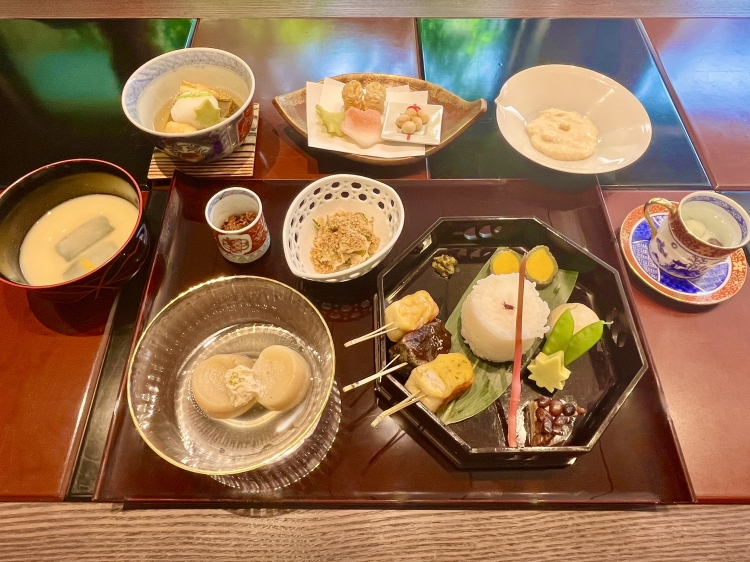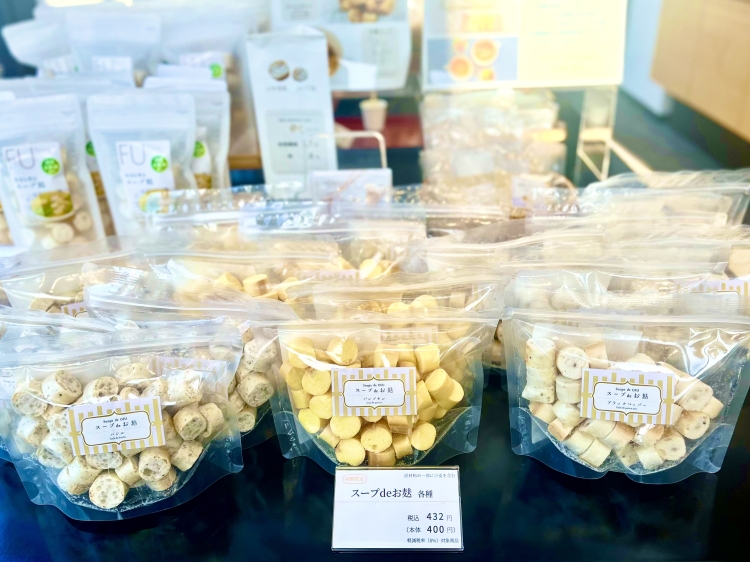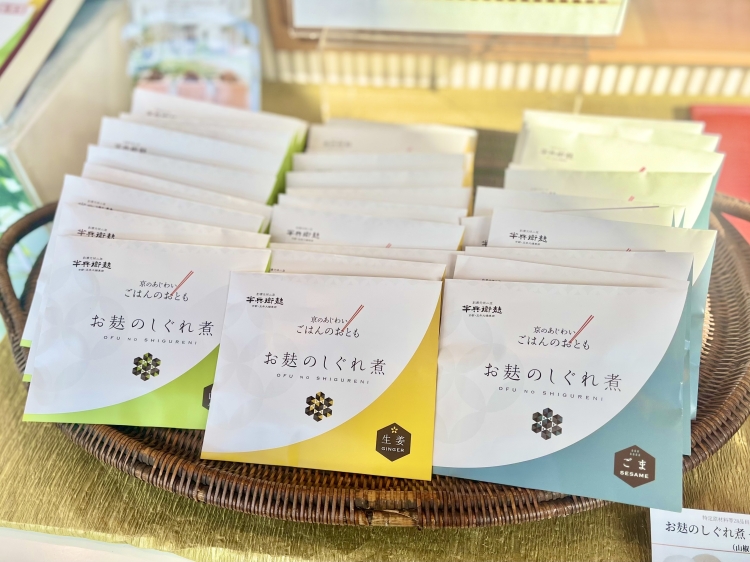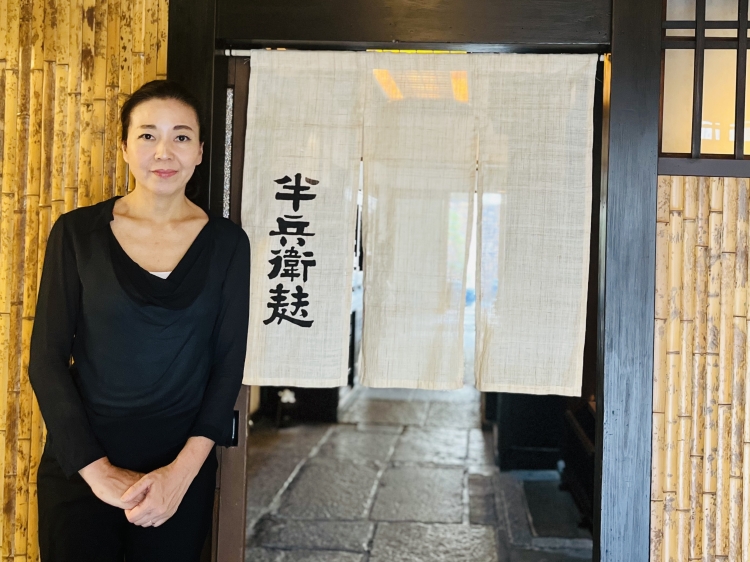ReservationSearch and reserve rooms
Click here to confirm, change or cancel your reservation
Shinkansen accommodation plan
提携法人専用予約
2025.07.20
Passing on Kyoto's food culture to the present day. Experience the profound world of Kyoto gluten at "Hanbei-fu"

Kyofu is a traditional ingredient that has supported Kyoto's food culture since ancient times as a valuable source of protein in Kyoto cuisine and Buddhist vegetarian dishes. Its history dates back to the Muromachi period, when a monk who had completed his training in China brought it back to Japan.
At the time, it was a precious food that only a select few could eat, such as at the Imperial Palace and temples, but in the Edo period, it began to be eaten by townspeople as well, at kaiseki cuisine and tea ceremonies.

Hanbeifu, a shop that has continued to carry on Kyoto's food culture to the present day, has been a Kyoto-style gluten and yuba specialty store for over 330 years since its founding in 1689 (Genroku 2), during the early Edo period.
At the main store, located at the foot of Gojo Ohashi Bridge, you can experience the profound world of Kyoto gluten, from traditional gluten dishes to new ways of enjoying gluten to suit modern dining tables.
What to change and what to protect

Townhouses and Western-style stone buildings connected by courtyards inspired by Kyoto
Hanbei Fu has a family motto that has been passed down since the first generation: "Fuekiryukou." "Fueki" means things that do not change, and "fashion" means things that change. The spirit of always taking on new challenges in line with the times while preserving tradition is deeply rooted in the company.
"Each generation is like a train car. It's important not to simply carry on the methods of the previous generation, but to add new value to them," says Director Jun Tamaoki.

The kitchen of a townhouse where Hoteison, one of the Seven Lucky Gods, is enshrined
True to their word, Hanbeifu renovated their main store between 2022 and 2023, reborn as a complex with a tea room, cafe, gallery and more surrounding a garden. While retaining the charm of the traditional wooden architecture of a Kyoto townhouse built in the Meiji era, they have made it a priority to create a space where visitors can experience the history and culture of Kyoto.
In the corridors of the facility, you can still see a well from over 120 years ago and a cooking stove called "Okudosan," giving you the extraordinary feeling of having traveled back in time.
"Mushiyoi" - A casual way to enjoy the charm of Kyoto gluten

"Mushiyoi" course meal using Kyoto gluten and yuba
Among the various attractions in this complex, including cafes and galleries, you can enjoy "Mushiyoi," a course meal made with gluten and yuba, at the teahouse, which combines a Japanese and retro-modern atmosphere. "Mushiyoi" is a Kyoto dialect word meaning "a light meal just enough to feed your stomach." The restaurant began serving this dish about 35 years ago, with the desire to make gluten, which was previously only thought of as something eaten in traditional Japanese restaurants, more accessible at home.

"Simmered grilled gluten and fresh yuba"
One of the course dishes, "Nittan with Fried Wheat Flour and Fresh Yuba," features simmered tofu that absorbs plenty of broth, and the moment you put it in your mouth, the flavor spreads throughout your mouth. "Nittan" means "cooked food" in the Kansai dialect, including Kyoto. It refers to a dish in which ingredients are slowly simmered in broth.
The secret to the firm elasticity and chewy texture of yakifu lies in the manufacturing method. Hanbeifu's yakifu is baked finely without using any leavening agents, so that it does not expand. This creates a unique texture that does not fall apart even when cooked.

"Raw gluten and fresh yuba miso soup"
A large amount of water is essential for making wheat gluten, and the quality of the water has a major impact on the aroma and texture, especially when making raw wheat gluten.
The well water used at Hanbei Fu is pumped up from deep underground and is soft water that comes from the same source as the Otowa Falls at Kiyomizu-dera Temple. Using this high-quality soft water is said to give the tea a smooth, gentle texture and delicate flavor.
The "Namafu and Namayuba Mizore Soup" allows you to enjoy the chewy texture of the namafu made in this way, and is a light yet satisfying dish.

Counter seats in the tea room where you can enjoy your meal while looking out at the garden
The menu changes seasonally, but everything is designed to be easy to make at home, and you can receive cooking instructions as you eat.
"Namafu goes well with miso and oil, and can be grilled, fried, or used as an ingredient in hot pot. Using it in place of tofu or rice cakes will surely broaden the variety of dishes you can make," says Tamaki, whose words are filled with his passionate desire for people to "enjoy wheat gluten dishes in a casual manner."
A new type of fu that fits into your daily life

New product "Soup de Ofu"
The shop on the first floor stocks not only the classic baked and namafu, but also many other products that are easy to incorporate into modern dining tables.
"Soup de Ofu" allows you to easily enjoy fu by simply adding it to soup and comes in three flavors: basil, pumpkin, and black pepper. It's perfect for busy mornings or when you want another dish.

"Shigureni of gluten" is a perfect accompaniment to rice
Also, the "Shigureni (Simmered Flour)" on the "Mushi Yoi" menu uses slightly harder wheat gluten, giving it a texture almost like meat, and the seasoning makes it the perfect accompaniment to rice.
This kind of product development is a manifestation of Hanbei Fu's desire to bring the charm of fu to modern life. While respecting tradition, they are always seeking new forms of fu.
Transcending time, passing on Kyoto's food culture to the future

Jun Tamaki, director of Hanbeifu, inherits the tradition and challenges of the company
You can experience Kyoto's history and culture in a traditional space, or enjoy a leisurely meal of "Mushiyoi" in a tea room. It's also fun to take home some products filled with new possibilities for fu as a memento of your trip.
"While continuing to pass on the good old things, I would like to also focus on creating products that are in line with the times and that will be accepted by young people and people from overseas," says Tamaki.
Hanbei Fu's challenge to connect Kyoto's food culture to the future through the ingredient of gluten will continue.
半兵衛麸
電話:075-525-0008
住所:京都府京都市東山区問屋町通五条下る上人町433
アクセス:京阪電鉄「清水五条駅」2番出口よりすぐ
HP:https://www.hanbey.co.jp/
SNS:https://www.instagram.com/hanbey1689/
*営業時間や定休日についての詳細は、上記のリンク先にてご確認ください。




